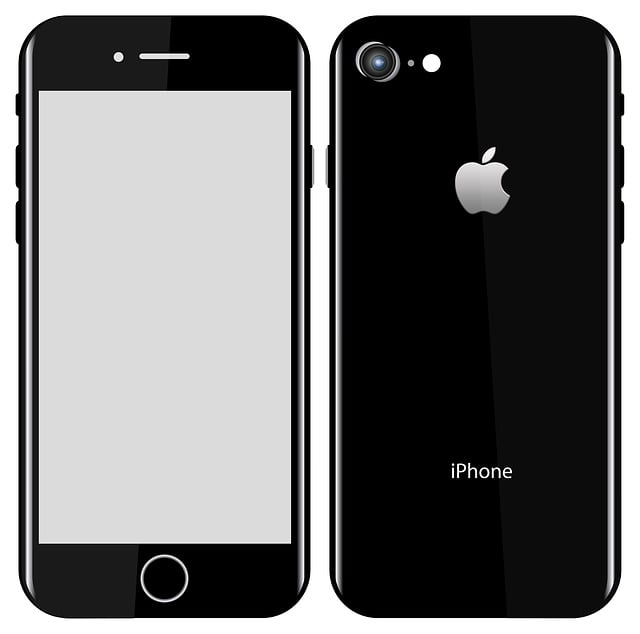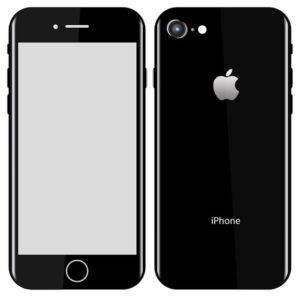In today's digital era dominated by mobile usage, Mobile-Friendly Design is essential for businesses to thrive. This approach ensures websites adapt to various screen sizes, enhancing user experience and engagement. Optimizing speed through techniques like image compression, CDN integration, and minification boosts performance and satisfaction rates. Responsive design, balancing performance and usability, adapts seamlessly across devices compared to adaptive design's faster loading times with device-specific versions. Testing tools and manual assessments are crucial for measuring mobile-friendliness. A content strategy focused on mobile users' distinct behaviors involves concise content, responsive design, visual simplicity, and interactive elements. Careful design considerations like responsive images, proper margin/padding, and mobile-specific interactions are vital. Future trends include voice interfaces, AI assistants, 5G, AR/VR, and enhanced accessibility, pushing the boundaries of Mobile-Friendly Design.
In today’s digital era, a seamless mobile-friendly design is no longer an option but a necessity. With a majority of internet users accessing websites via their smartphones, ensuring your site offers a fast, intuitive experience is crucial for engagement and retention. This article delves into the essential elements of creating a mobile-optimized site, from understanding user needs to implementing best practices and staying ahead of future trends. Discover key techniques, tools, and insights to enhance your online presence across all devices.
Understanding Mobile-Friendly Design: Why It Matters Today

In today’s digital age, where mobile devices outnumber desktops, a mobile-friendly design is no longer an option but an imperative for businesses and content creators. It ensures that websites and applications adapt seamlessly to various screen sizes and resolutions, providing an optimal viewing experience for users across smartphones, tablets, and other mobile platforms. This approach not only caters to the growing demand for accessibility on the go but also significantly impacts user engagement, retention, and overall conversion rates.
Mobile-friendly design is crucial in enhancing usability, reducing bounce rates, and improving search engine rankings. With a vast majority of internet users accessing content via mobile, sites that load quickly, display clearly, and offer intuitive navigation on smaller screens hold a competitive edge. It’s about understanding user behavior on different devices, simplifying interfaces, optimizing content delivery, and ensuring every interaction is seamless, ultimately fostering a positive relationship between brands and their mobile audiences.
Key Components of a Fast Mobile Site

A fast mobile-friendly design is paramount in today’s digital era, where users expect instant access to information on their smartphones and tablets. The key components of a swift and efficient mobile site include minimal page load times, seamless navigation, and responsive layouts that adapt to various screen sizes. These elements ensure that visitors can easily explore content without frustration or delay.
Optimizing images, leveraging browser caching, and employing content delivery networks (CDNs) are effective strategies to reduce page load times. Simple and intuitive navigation menus, along with clear calls-to-action, make it effortless for users to find what they’re looking for. Additionally, a mobile-friendly design should prioritize faster rendering and quicker interaction to enhance the overall user experience, ultimately driving higher engagement and satisfaction rates.
Optimizing for Speed: Techniques and Tools

To ensure a seamless user experience on mobile devices, optimizing for speed is paramount in modern mobile-friendly design. Techniques such as minification and compression of HTML, CSS, and JavaScript files significantly reduce load times by eliminating unnecessary characters and data. Tools like Google PageSpeed Insights offer insights into specific areas for improvement, enabling developers to make data-driven decisions for enhancing performance.
Leveraging browser caching, content delivery networks (CDNs), and lazy loading images are additional strategies that contribute to faster page loads. CDNs distribute content across multiple servers worldwide, reducing latency and ensuring users access the latest version of a webpage instantly. Together, these techniques not only accelerate mobile websites but also enhance user engagement, converting visitors into loyal customers more effectively in the competitive digital landscape.
User Experience: Making Sites Intuitive on Mobile

In today’s mobile-first world, ensuring an exceptional user experience on smaller screens is paramount for any website’s success. Intuitive navigation, clear call-to-actions, and a layout that adapts seamlessly to different device sizes are non-negotiable components of a truly mobile-friendly design. Users expect sites to load quickly, elements to be easily tap-able, and content to be scannable, just as they would on a desktop. By prioritizing these aspects, businesses can foster engagement, boost conversions, and leave visitors with a positive impression, solidifying their brand’s online reputation.
Responsive Design vs. Adaptive Design – Which is Better?

In the realm of mobile-friendly design, the distinction between responsive and adaptive design is crucial. Responsive design ensures that a website seamlessly adapts to various screen sizes and resolutions, providing an optimal viewing experience regardless of the device. This approach leverages media queries and flexible layouts to adjust content and images, making it a popular choice for modern websites.
Adaptive design, on the other hand, takes a more specific approach by creating separate versions of a site tailored for different devices. While this can lead to faster loading times for targeted audiences, it requires additional development effort. In today’s digital era, where users access content across countless devices, responsive design often stands out as the more practical and efficient solution, balancing performance, usability, and long-term maintainability.
Testing and Measuring Mobile-Friendliness Effectiveness

Testing and Measuring Mobile-Friendliness is a vital step in ensuring the effectiveness of your Fast Mobile-Friendly Design. Utilizing tools like Google’s Mobile-Friendly Test allows for an instant assessment of a website’s performance across various mobile devices, identifying any issues with speed, usability, or compatibility. These tools simulate real-world conditions, providing insights into how different phones and browsers render your site.
Beyond automated tests, manual assessments by users on diverse devices offer qualitative feedback. Analyzing user behavior, such as bounce rates and time spent on the site, can reveal critical areas for improvement. By combining quantitative data from testing tools with subjective experiences from users, you gain a comprehensive understanding of your Mobile-Friendly Design’s success, enabling targeted optimizations to enhance the overall user experience.
Best Practices for Developing Mobile-First Content Strategies

When developing a mobile-first content strategy, prioritizing user experience is paramount. Begin by understanding that users on mobile devices have different behaviors and expectations compared to their desktop counterparts. Therefore, create content that is concise, easily scannable, and optimized for quick consumption. Utilize clear and simple language, break down complex ideas into digestible chunks, and ensure your content hierarchy makes essential information readily accessible at a glance. Mobile-friendly design also involves implementing responsive web design principles, ensuring your content adapts seamlessly to various screen sizes and resolutions.
Another best practice is to focus on visual simplicity and accessibility. Opt for clean layouts with ample white space to enhance readability. Use high-quality images that are optimized for faster loading times, and consider incorporating interactive elements that engage users without sacrificing performance. Ensure your color contrast meets accessibility standards to accommodate users with visual impairments. Regularly test and refine your content strategy based on user feedback and analytics data, staying agile in your approach to meet the evolving needs of mobile audiences.
Common Mistakes to Avoid in Mobile-Friendly Design

Creating a mobile-friendly design is crucial for ensuring users have a seamless experience on their devices, but even the best intentions can lead to common pitfalls. One frequent mistake is neglecting responsive images. While optimizing images for web reduces loading times, forgetting to make them adaptive to different screen sizes can result in distorted visuals or prolonged loading on smaller screens. Another blunder is inadequate margin and padding usage. Balancing these elements ensures a clean layout that’s easy to navigate, but ignoring best practices can lead to crowded content and a poor user experience.
Moreover, ignoring the importance of mobile-specific interactions is a costly error. Buttons, forms, and menus must be easily operable with thumbs, so ensuring sufficient click areas and simplifying navigation enhances usability. Lastly, many designers overlook testing across devices. While emulators are useful, physical device testing reveals unpredictable behaviors, ensuring a truly mobile-friendly design that works seamlessly across diverse smartphone models and operating systems.
The Future of Mobile-Friendly Design Trends

As technology continues to evolve, so do the expectations of mobile users. In the future, we can anticipate even faster and more seamless experiences driven by emerging trends in Mobile-Friendly Design. Voice user interfaces and AI-powered assistants are set to play a significant role, offering intuitive navigation and personalized content delivery. The rise of 5G networks will further revolutionize design by enabling ultra-fast loading times, making dynamic and interactive content the norm rather than the exception.
Additionally, expect to see more emphasis on accessibility features, ensuring that Mobile-Friendly Design caters to users with diverse needs. Augmented reality (AR) and virtual reality (VR) technologies will also integrate seamlessly into mobile interfaces, blurring the lines between physical and digital experiences. These trends promise to create immersive, interactive, and highly adaptable designs that adapt gracefully across various devices and screen sizes.
